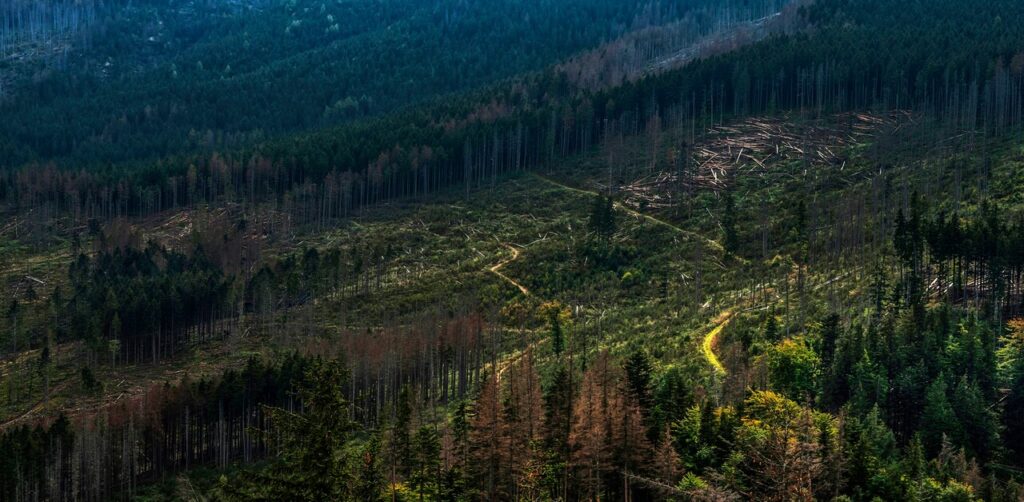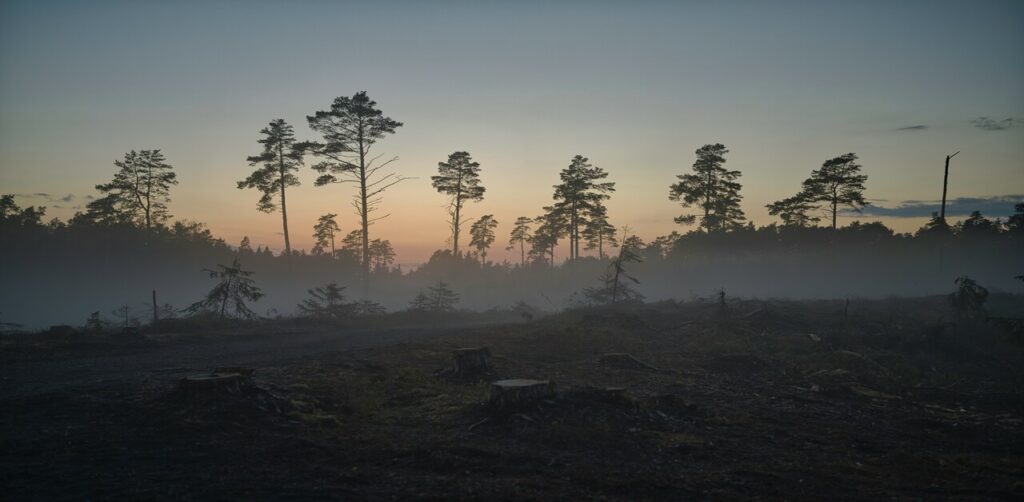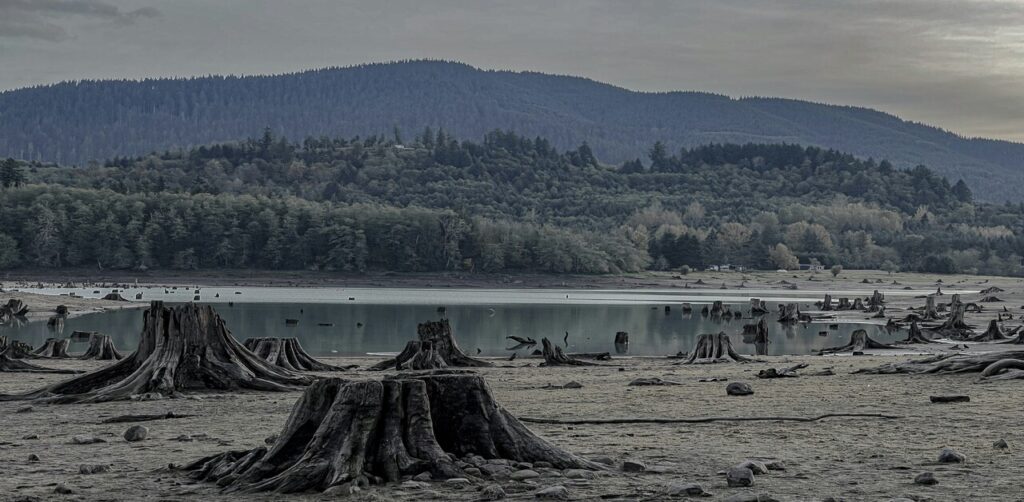Deforestation can be considered one of the most urgent environmental problems of the modern world.
It describes deforestation or significant clearing, deforesting, or cutting forestlands, usually to develop agricultural land, urbanization, harvest timber, or minimize other human activity.
Forests, commonly referred to as the lungs of the Earth, are crucial in keeping the ecological balance as carbon dioxide is absorbed, oxygen is released, soil is conserved, and various life forms are supported.
Nevertheless, despite their significance, hundreds of millions of hectares of forests are disappearing annually, which has extensive implications for the Earth as well as humanity.
In this article, we are going to discuss the causes, effects, and potential remedies to deforestation in detail.
Table of Contents
Importance of Forests
Forests are so much more than simply groups of trees. They remain ecosystems, which serve to promote biodiversity, regulate the climate, and provide resources that enable human life to survive.
Forests are centers of biological diversity as they sustain approximately 80 percent of life on Earth. They also serve as natural filters, regulating water cycles and preventing soil erosion.
Forests provide humans with food, shelter, medicine, fuel, and raw materials. A high number of indigenous people rely solely on forests to make a living.
Furthermore, forests are critical in mitigating the consequences of climate change because it is known to lock up carbon in their biomass.
Considering this importance, forest killing is not only a local problem, but also a global crisis.

Causes of Deforestation
Deforestation is a result of a combination of both human activities and natural forces, with human activity being the major cause.
Below are the major causes:
1. Agricultural Expansion
The increased world food demands have compelled farmers and industries to deforest land to farm.
Large-scale plantations of crops such as soya, palm oil, and sugarcane, as well as slash-and-burn farming activity, contribute significantly.
2. Logging and Timber Industries
Timber, paper, and furniture are produced using the trees. One notable issue that pertains to the developing nations is illegal logging, where building laws that protect forests are loosely adhered to.
3. Urbanization and the Development of Infrastructure
Cities grow along with the population. Forested land can be sacrificed for roads, highways, industries, housing projects, and so on.
4. Mining and Extraction industries
Coal mining, oil mining, gold mining, and other minerals often mean that huge forest areas are cleared, leaving no habitat.
5. Grazing and Cattle Ranching
In places such as South America, large areas of rainforests are deforested to produce cattle to satisfy the international meat demand.
6. Natural Factors
Even though natural causes are minor when compared to human ones, natural forces may also cause deforestation, such as wildfires, storms, and pests.
But the magnitude of these natural losses is way less than the amount of deforestation due to humanity.
If you want to buy a book of “Sapiens: A Brief History of Humankind“, then you can click here.

Impacts of Deforestation
The impacts of deforestation are devastating and cut across the environmental, social, and economic horizons.
1. Climate Change
Forests serve as a carbon sink by capturing carbon dioxide from the atmosphere.
The release of the stored carbon takes place when trees are cut or burnt, thus contributing to the emission of greenhouse gases.
This speeds up global warming and changes the weather patterns on the Earth.
2. Loss of Biodiversity
Deforestation decimates the habitat of thousands of species.
The disappearance of habitats of many plants, birds, and animals is leading to their extinction.
Such loss interferes with the ecosystems and shortens the genetic diversity, which decreases the resilience of nature.
3. Soil Degradation and Erosion
The roots of trees hold the soil together and avert erosion.
Lack of forests would result in soil infertility, making it susceptible to landslides and eventually turning into nonproductive land, minimizing agricultural productivity.
4. Water Cycle Disruption
By evaporating into the atmosphere, forests affect rainfall.
Their elimination disrupts the normal cycle of water flow, which results in a decrease in rainfall in certain regions and floods in others.
5. Influence on Aboriginal people
Most of the tribal and indigenous populations rely directly on forests.
Deforestation not only evicts them but also endangers their culture, traditions, and way of life.
6. Economic Consequences
Although logging and farming can have short-term economic gains, the long-term consequences include the destruction of ecosystem services, the risk of disasters, the lack of soil fertility, and damage to local and global economies.

Global Hotspots of Deforestation
Deforestation especially takes place in some regions, which have high forests and have economic demands:
1. Amazon Rainforest (South America): This is the largest rainforest in the world, which is being cleared at a high rate to make way for cattle ranching and farming.
2. Congo Basin (Africa): It is very biodiverse and is a victim of logging, mining, and slash-and-burn agriculture.
3. Southeast Asia (Indonesia, Malaysia): Palm oil plantations and timber are the principal reasons why the forests are cleared.
These areas are vital to the stability of the climate across the world, and preservation is highly important.

Efforts to Combat Deforestation
Deforestation needs to be dealt with through a combination of policies, technology, community action, and international collaboration.
1. Afforestation/Reforestation
Afforestation (planting new trees) and reforestation (restoring lost forests) can help. Such initiatives as the Great Green Wall (Africa) and the Green India Mission (India) are outstanding examples.
2. The practices of forestry are environmentally friendly
Deforestation can be minimized through the promotion of eco-friendly timber harvesting, the implementation of stringent logging laws, and the promotion of certified sustainable products.
3. Agroforestry
Planting trees in agricultural settings has its own positive effects as it helps to enhance soil fertility, offer shade, and preserve biodiversity, among other things, to the advantage of the farmers and the environment at large.
4. Awareness and Education
The benefits of teaching citizens on the significance of forests and advancing other forms of livelihoods are lessening the reliance on practices that destroy forests.
5. Policy and Legislation
Strict legislation against illegal logging, land use, and the establishment of forest areas as reserves can be implemented by governments.
6. Global Initiatives
The United Nations and other international bodies, such as the World Wildlife Fund (WWF), are also engaged in efforts to preserve forests via emissions such as the REDD+ (Reducing Emissions of Deforestation and Forest Degradation).
7. Individual Actions
The social environment responds to every person: reducing paper waste, avoiding products that can be associated with deforestation (unsustainable palm oil), promoting socially friendly businesses, and taking part in tree planting campaigns.

Deforestation is a problem that cannot be dealt with in one day. It involves a concerted effort of governments, industries, communities, and individuals. Conservation and development should therefore go together.
As much as economic growth is meaningful, it must not be done at the expense of the destruction of natural resources, which keep our Earth alive.
Investing in renewable energy, advocating sustainable agriculture, and implementing stringent environmental regulations are moves in the right direction.
More importantly, society must develop a mentality that cherishes forests, not as resources to utilize but as essential ecosystems to conserve.
If you want to read an article about rice cultivation in detail, then you can click on it.
Conclusion
Deforestation is not a mere environmental problem, but it is also a human survival problem. Forests balance the climate, they give oxygen, maintain biodiversity, and make an ecosystem balanced.
They destroy life in all its guises. With the present trend, the world is going to experience increased natural disaster frequency, food crisis, and irreversible degradation of the biodiversity of the Earth.
The preservation of forests is a common task. With the understanding of their worth, sustainable practices, and cooperation, humanity can slow and even undo the effects of deforestation.
It is time to change, and it is time to change now to save the present and the future generations.

